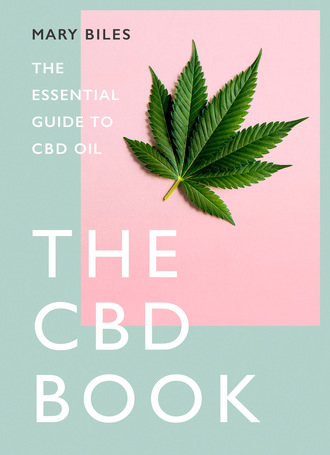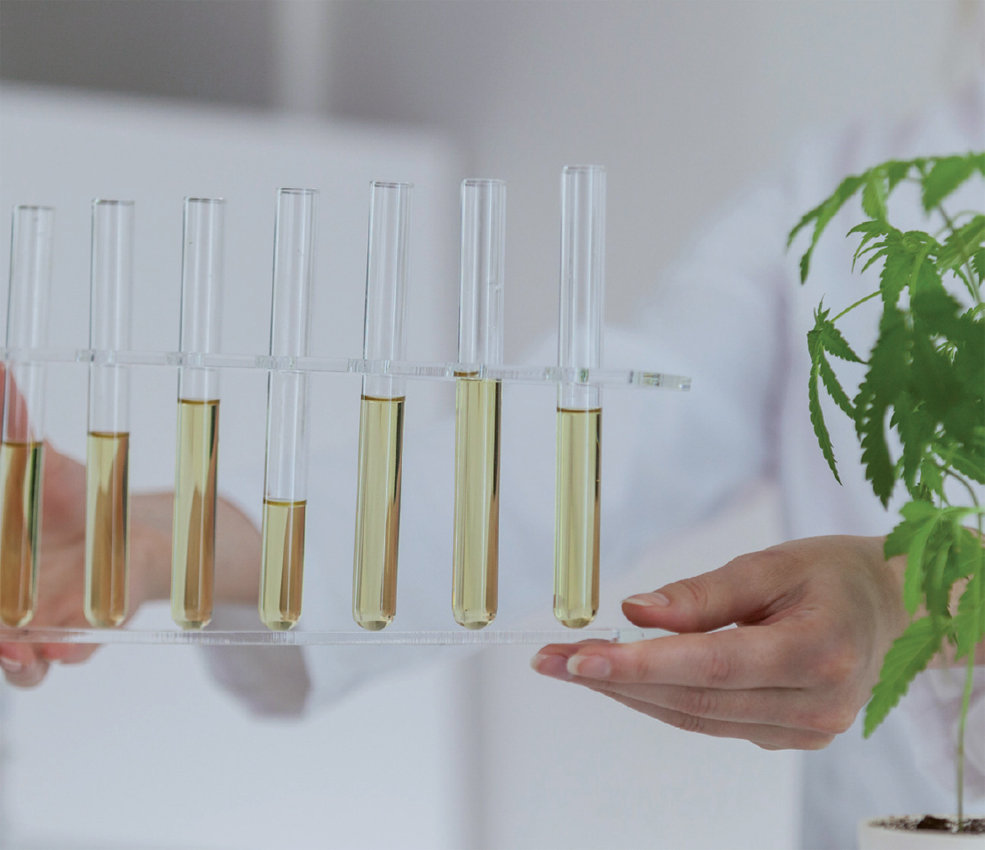
Полная версия
THE CBD BOOK
OF MICE AND MEN: HOW A DRUG GETS TO MARKET AND WHY IT MATTERS
Unless you’re a research scientist or a physician, it’s likely you’ve never spent much time pouring over peer-reviewed academic research papers. The nearest most of us get are the summarised versions used in headline-grabbing articles celebrating the latest cure for cancer. You’re not alone if you take these stories at face value. If those clever scientists have proved something in the lab, it must be true in humans, right?
The reality is somewhat different. Discoveries made in petri dishes and tried out on rodents are not necessarily replicated in humans. So, if you’re researching CBD for your own health condition, it’s vital to know the difference.
ODDS STACKED AGAINST CANNABIS MEDICAL RESEARCH
It’s often the case that getting a drug to market is a lengthy process that can take more than a decade and costs billions of pounds. As a result, pharmaceutical companies tend to focus on patentable, synthetic, single-molecule drugs to be sure they get a decent return on their investment. It’s no surprise big pharma has steered clear of whole-plant cannabis and CBD oils, which as botanical extracts containing hundreds of compounds are financial suicide to invest in.
Clinical research has also been stymied by the worldwide Schedule 1 classification deeming cannabis without any medical benefit and liable for abuse.
Professor Manuel Guzmán, Professor of Biochemistry and Molecular Biology at Madrid University and author of several ground-breaking studies into cannabinoids and cancer, describes the barriers faced by researchers.
Doing clinical research with cannabinoids is very complicated because cannabis is controlled by the United Nations and is a Schedule 1 drug, subjected to very strong restrictions in the production, manufacturing, and exporting etc. That means that many clinicians and many investors get frightened. They don’t want to get into so much bureaucracy and they prefer to go for substances that are easier to get into clinical trials.
Consequently, in the eyes of health regulators and the medical profession, there is a paucity of evidence proving cannabis (including CBD) is safe and effective in humans. That’s not to say there isn’t a wide body of observational data and single case studies. But this isn’t considered sufficiently reliable by those deciding which medicines we can take.
HOW MUCH CAN WE TRUST PRECLINICAL STUDIES?
Let’s take the following story that hit the headlines recently. ‘Cannabis Chemical May Help Treat Pancreatic Cancer, Study Finds,’ reported one UK broadsheet.28 The chemical in question was a type of flavonoid (naturally occurring molecules in plants and fruits), which was first tested with promising results on pancreatic cancer cells in test tubes or petri dishes (in vitro).29 Next step was to extend the investigation to rodents (in vivo) with pancreatic cancer tumours. There’s no guarantee that positive in-vitro results are replicated in animals, but in this instance, scientists found the flavonoid slowed both tumour growth and the spread of cancer cells. ‘Hurrah’, you might think, ‘we have a cure for pancreatic cancer.’ Well, not exactly. Professor Guzman, who has spent the last 30 years investigating the anti-tumoral properties of cannabinoids, knows very well that mice and men are not the same.
One has to consider when one cures cancer in a mouse, it’s not really cancer, it’s a model of cancer which has only part of the characteristics of human cancer. So the gap between curing the cancer in a mouse and a human is huge. Even in a sophisticated cancer model in mice – in the end mice are mice. It’s not just a 25-gram human. Mice have a much simpler biology than ours. They have a strong capacity for tissue regeneration and a stronger immune system than us. In mice, there are hundreds of molecules that can cure cancer, but there are very few molecules that can do that in humans.
The bottom line is that preclinical trials point towards the therapeutic potential of a substance, and is a vital part of the process of getting a drug to market, but it is only the beginning of the story.
CLINICAL TRIALS
When a pharmaceutical company is confident there’s sufficient preclinical evidence showing safety and efficacy of a drug in animals, the next step is to move on to human studies.
Most licensed medicines have been through three phases of randomised clinical trials, which if successfully completed, show they are safe, more effective than a placebo, and give information about appropriate dosing. Randomised controlled trials, the third and final phase in which patients are randomly assigned either the drug being tested, the current standard treatment or a placebo, are considered the gold standard for proving a medicine is safe, effective, and free from patient (or clinician) bias. Without this information, doctors do not feel confident prescribing a drug and it will not get recommended by health regulators such as the National Institute for Health and Care Excellence (NICE).

Right now, the only CBD drug to have passed through the three phases of clinical trials has been Epidyolex (purified CBD) for children with Dravet and Lennox-Gastaut Syndromes, two rare types of drug-resistant epilepsy. Phase 2 clinical trials on small numbers of patients are currently taking place, testing CBD for anxiety, PTSD, schizophrenia, opioid addiction, inflammatory bowel disease, bipolar depression and Parkinson’s disease. However, even if these trials are successful, phase 3 studies must be carried out on hundreds or even thousands of patients before CBD can be approved for any of these conditions.
So next time you read a ‘CBD Can Cure X’ story, find the original scientific study and view it through the lense of this chapter. The same goes for the next section in which I discuss current CBD research.
ADDICTION
A common concern for anyone new to CBD is whether it’s possible to become addicted to CBD oil.
Well, as it turns out, CBD is completely non-addictive. It’s one of the reasons the World Health Organisation recommended that CBD should not be considered a controlled substance. Not only that, research suggests that CBD may actually help people come off or abstain from addictions to substances such as tobacco, heroin, cocaine and even cannabis itself.
It makes sense if you think about it. Many people develop addictions because they cannot cope with the stresses of their daily life. Then once addicted, coming off a drug is met with horrendous cravings and further anxiety. So a substance that has an anti-anxiety effect could potentially help manage the cravings during the withdrawal period and keep stress at bay during abstinence.
WHAT’S THE EVIDENCE?
Studies on both animals and humans suggest that CBD can indeed reduce cravings in addictions to certain substances.
In one study, heroin addicts were given a single dose of CBD over three consecutive days. They were then exposed to heroin-related and neutral video stimuli at 1 hour, 24 hours and 7 days after the CBD. The subjects receiving CBD had fewer cravings than the placebo group, an effect that lasted for 7 days after treatment.30
In everyday terms, this suggests taking CBD when trying to quit an addiction may help to neutralise stimulus that would usually bring about cravings and potential relapse. So if you take CBD, maybe you won’t feel like a cigarette so much after that morning coffee.
Or if you’re not ready to quit your habit completely, CBD could just be a way to cut down. A double-blind placebo study in which cigarette smokers were encouraged to use an inhaler containing either CBD or a placebo every time they wanted a cigarette, found the CBD group smoked 40 per cent less cigarettes than the placebo group.31
Perhaps the most surprising use of CBD in addiction is for the treatment of cannabis dependence itself. Researchers have found that CBD can reduce ‘wanting’ and ‘liking’ of cannabis-related stimuli, which basically means it makes smoking weed less enjoyable.32
A case history of a 19-year-old with cannabis dependency, suggested CBD can also reduce withdrawal symptoms when quitting cannabis.33 These findings will hopefully be replicated in the results of a yet-to-be-published clinical trial in which CBD was given to subjects trying to remain abstinent from or become less dependent on cannabis. Researchers hope that improvements in memory, psychological wellbeing, and days in work/education will be noted.34
Quitting any addiction is a difficult task. Accessing support through groups such as Alcoholics Anonymous, Narcotics Anonymous or talking to your family doctor are always an advisable first step. However, taking CBD during the process of cutting down or in abstinence could give you the extra help you need to manage the anxiety and any cravings you may experience.

Конец ознакомительного фрагмента.
Текст предоставлен ООО «ЛитРес».
Прочитайте эту книгу целиком, купив полную легальную версию на ЛитРес.
Безопасно оплатить книгу можно банковской картой Visa, MasterCard, Maestro, со счета мобильного телефона, с платежного терминала, в салоне МТС или Связной, через PayPal, WebMoney, Яндекс.Деньги, QIWI Кошелек, бонусными картами или другим удобным Вам способом.

